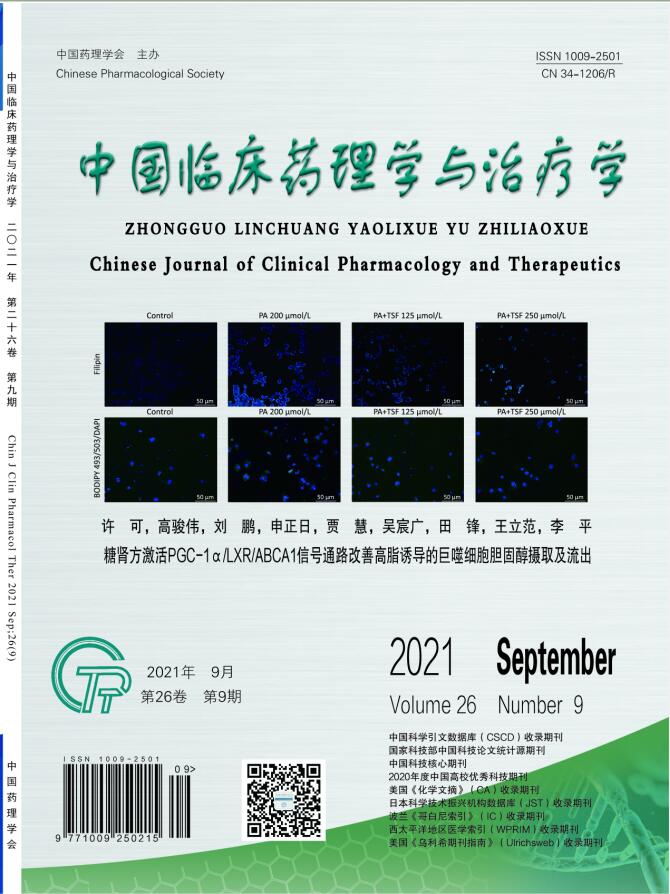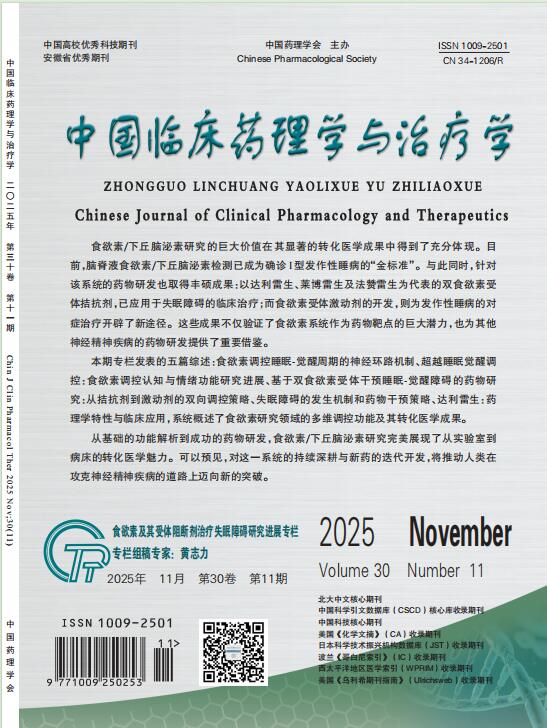Effects of different doses of dexamethasone on angiotensin II, its receptors and NO levels in septic kidney injury rats
ZHAN Zhuqin, BAI Haitao
2021, 26(9):
995-1004.
doi:10.12092/j.issn.1009-2501.2021.09.004
 Asbtract
(
546 )
Asbtract
(
546 )
 PDF (4197KB)
(
564
)
Related Articles |
Metrics
PDF (4197KB)
(
564
)
Related Articles |
Metrics
AIM: To investigate the changes of angiotensin II, its receptors and nitric oxide (NO) expression in rats with acute kidney injury (AKI) induced by endotoxin (LPS) and to assess the efficacy of different doses of dexamethasone (DXM). METHODS: Wistar rats were randomly divided into five groups as follows: control group (NC), LPS group, and DXM treatment groups of different doses of DXM (0.5, 1.0 and 5.0 mg/kg). The AKI group was injected with LPS through the lateral tail vein, and the intervention group was given different doses of DXM after LPS injection. Tissue samples were collected at 2, 6, 12 and 24 h after treatment. Serum creatinine and urea nitrogen levels were determined by automatic biochemical analyzer. H&E staining was used to observe renal histopathology. Serum TNF-α and MIP-1α levels were determined by ELISA. The expression of the angiotensin receptor 1 (AT1R) and angiotensin receptor 2 (AT2R) proteins were detected by Western blot and immunohistochemistry. Nitrate reductase was used to detect NO changes in the serum and renal tissues. RESULTS: The serum levels of serum TNF-α, MIP-1α, creatinine, and urea nitrogen were significantly increased in the LPS group compared with the control group (P<0.05). A similar trend was also observed in the levels of plasma and renal tissue AngII, renal tissue AT2R, serum and renal tissue NO (P<0.05). The expression of AT1R in renal tissue was significantly decreased in the LPS group compared with the control group (P<0.05). Pathological analysis showed that glomerular neutrophil infiltration and renal tubular epithelial cells swelling, vacuolar degeneration and necrosis in the LPS group. Prolongation LPS treatment resulted in more significant kidney damage. The serum levels of TNF-α, MIP-1α, creatinine, and urea nitrogen were significantly decreased in the DXM group compared with the LPS group (P<0.05). A similar trend was also observed in the levels of plasma and renal tissue AngII, renal tissue AT2R, serum and renal tissue NO in the DXM group (P<0.05). The expression of AT1R in renal tissue was significantly increased (P<0.05) in the DXM group compared with the LPS group, indicating the alleviation of kidney injury. Amongst these biomarkers, the levels of serum TNF-α, MIP-1α, plasma AngII showed the most significant decrease in the high dose DMX group (P<0.05). The levels of serum creatinine, urea nitrogen, kidney NO showed more significant decreases in the low and medium dose DMX groups (P<0.05). The levels of kidney AngII to dose and AT1R showed the most significant decrease in medium and high dose DXM groups (P<0.05). The levels of kidney AT2R and serum NO were not significantly different between the DXM treatment groups. CONCLUSION: LPS can induce AKI in rats that can be mitigated by DXM. The mechanism of DXM in protection against AKI may be related to the down-regulation of inflammatory factors such as AngII, AT2R, and NO, and the up-regulation of AT1R expression. Different doses of dexamethasone have different intervention effects for different effector molecules.


